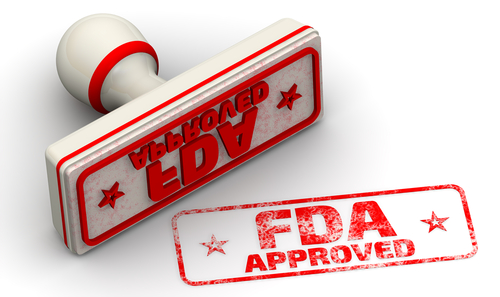FDA Approves Valtoco Nasal Spray to Treat Seizure Clusters in Epilepsy Patients, 6 and Older
Written by |

The United States Food and Drug Administration (FDA) has approved Valtoco (diazepam nasal spray) as a rescue treatment for acute, repetitive seizures (seizure clusters) in people with epilepsy, ages 6 and older.
“Cluster or acute repetitive seizures are challenging to treat and highly disruptive in the lives of people with epilepsy,” Craig Chambliss, president and CEO of Neurelis, which developed Valtoco, said in a press release.
Valtoco is the first nasal spray approved to treat such seizure clusters outside of a hospital. The only previously-approved medication for the same purpose is Bausch‘s Diastat (diazepam rectal gel).
Neurelis anticipates that Valtoco will be available in mid-March at doses of 5, 10, 15, and 20 mg.
Seizure clusters occur in patients with Dravet syndrome, and they can lead to injury or to status epilepticus, a condition characterized by repeated and/or long-lasting seizures that can be life-threatening. As a therapy that is ready-to-use and can be administered by a care partner, Valtoco may improve the response to such seizure emergencies, regardless of when and where they occur.
“Until recently, approved treatment outside of medical care settings was only available as a rectally administered medication,” said R. Edward Hogan, MD, director of the Washington University and Barnes-Jewish Epilepsy Center in St. Louis. “The FDA approval of diazepam nasal spray is a significant advancement for the epilepsy community.”
Valtoco combines diazepam, a well-established seizure medication, with Neurelis’s Intravail, which helps the active ingredient enter the body through the nose more efficiently. Regardless of its mode of delivery, diazepam works by mimicking the neurotransmitter GABA, which reduces neuronal activity.
The FDA granted Valtoco orphan drug designation in 2015 and fast track designation in 2017 for the treatment of seizure clusters. These designations speed the regulatory review process and provide financial benefits upon approval.
“One of the goals of rescue therapy is to treat seizure clusters, recognized as medical emergencies, before negative consequences may be experienced,” said Jacqueline A. French, MD, a professor of neurology at NYU Langone Health’s Comprehensive Epilepsy Center and Epilepsy Foundation chief medical and innovation officer. “Having a seizure rescue treatment that is generally safe, reliable and ready-to-use is very empowering.”
The decision to approve Valtoco was based largely on data from an ongoing open-label, Phase 3 clinical trial (NCT02721069) in people with epilepsy who are 6 or older and experience seizure clusters.
So far, more than 2,000 seizures have been treated, and Valtoco has been shown to be generally safe and well-tolerated. The most common treatment-related adverse events, affecting at least 4% of participants, were tiredness, headache, and nasal discomfort.
Additionally, data from studies conducted in healthy volunteers showed that the movement of diazepam through the body was two to four times less variable with Valtoco as with the rectal gel.
Neurelis has established a patient service program, called myNEURELIS (1-866-696-3873), to allow patients and their care partners to select the support services they desire.
“This is a defining moment for Neurelis as Valtoco is our first FDA-approved product,” Chambliss said. “We are excited that we can now offer this treatment option to patients and provide additional support to the epilepsy community.”





